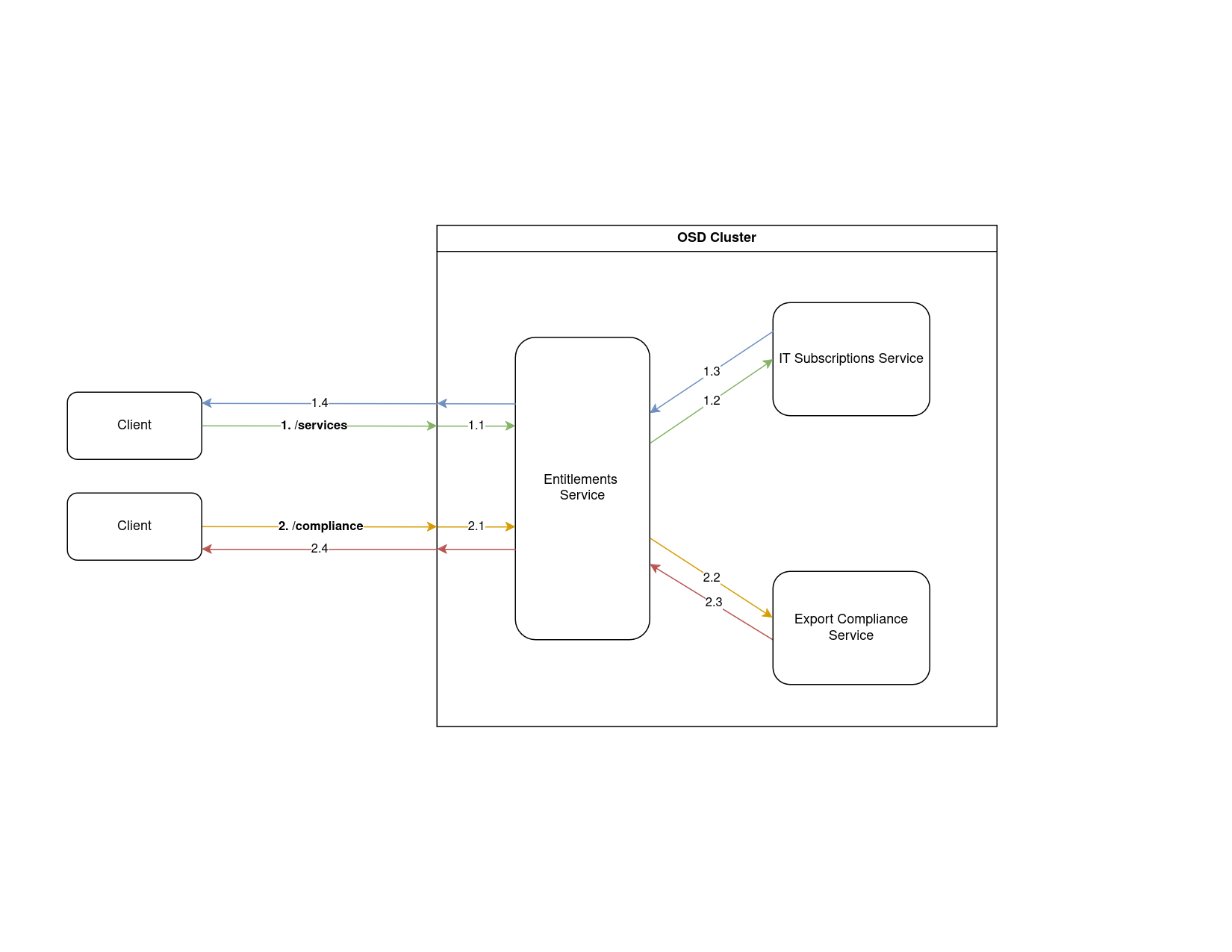Entitlements service serves as a proxy to various backend Red Hat IT services. It performs the following functions:
/subscriptions: query IT for a list of subscriptions that a user is entitled to/compliance: query IT for user compliance checks/seats- OBSOLETE - these apis are no longer enabled in prod
- The
/bundles/bundles.example.ymlfile in this repo is for local testing only - To run the app, be sure to copy
/bundles/bundles.example.ymlto/bundles/bundles.yml - To make SKU changes for the live service, see the
entitlements-configrepository: https://github.com/RedHatInsights/entitlements-config
Install Golang:
sudo dnf install golang # or brew install go on OSXClone this repo:
git clone git@github.com:RedHatInsights/entitlements-api-go.gitThen, install the project's Go dependencies by running:
go get ./...Build the project and generate the openapi types and stubs:
makeIf your local version differs from what entitlements is using, you can download the desired version of go here: go.dev/doc/manage-install, and then pass the path to the go binary to all make commands like so:
make GO=~/go/bin/go1.22To run the Entitlements API locally, you will need an Enterprise Services cert with access to the dev subscription endpoint /search/criteria and the export compliance service in whatever environment you are testing in.
- You can request a personal cert by following ALL steps in this mojo doc.
- You can request access to export compliance service by following the appropriate steps in this doc.
- You can export your crt and key like so:
openssl pkcs12 -in your-p12-cert.p12 -out your-key.key -nocerts -nodesopenssl pkcs12 -in your-p12-cert.p12 -out your-cert-sans-key.crt -clcerts -nokeys
You'll need to make a config file specific to your machine.
Create a local config directory: mkdir -p ./local
Add a file that contains your local configuration options: $EDITOR ./local/development.env.sh
The contents should look like this:
export ENT_KEY=./{path_to_key}.key
export ENT_CERT=./{path_to_cert}.crt
export ENT_CA_PATH=./{path_to_ca_cert}.crt
export ENT_SUBS_HOST=https://subscription.dev.api.redhat.com
export ENT_COMPLIANCE_HOST=https://export-compliance.dev.api.redhat.com
export ENT_DEBUG=trueReplace {path_to_key} and {path_to_cert} with the locations of the .key and .crt files from the previous section.
ENT_DEBUG will use mock clients for ams and bop, if this is not set to true you will need more config to setup those clients.
See the bop and ams client files for what config is needed.
Copy the /bundles/bundles.example.yml to /bundles/bundles.yml in order to have your local app consume bundle data. You can modify this file for local testing.
Note: This file is for local testing only. If you wish to make changes to the actual bundles, please refer to https://github.com/RedHatInsights/entitlements-config
Now that everything is set up, you can run the application using:
source ./local/development.env.shthen run one of the following
# this will generate, build, and run the built executable (good for debugging)
make exeor you can also run
# this will run `go run ...` which will build a stripped down optimized version of the app
make run To run locally with Docker:
make image
docker run -p 3000:3000 entitlements-api-goThe Entitlements API requires that you pass in a valid x-redhat-identity header or it rejects requests.
For an example see cat ./scripts/xrhid.sh
To test the bundle sync behavior, you'll need to configure your environment similar to the instructions above, build the script, and run it against the dev environment:
source ./local/development.env.sh
make build
./bundle-sync- To run the unit tests, execute the following commands from the terminal:
make test - To run the unit tests how they are run in our pr_check builds (generates output files):
make test-all
- To include benchmarks:
make bench
Versioning: All releases should follow SemVer versioning.
Release Tagging: Releases are drafted with a version, and then master is tagged with the version number.
For example, release Entitlements v1.16.1 has a corresponding tag v1.16.1.
Deployment: Once a PR merges to master, our build-main jenkins job will build/deploy an image to quay.io and tag it with the commit sha. We then update the image tag of our deployment in app-interface to that same commit SHA.
